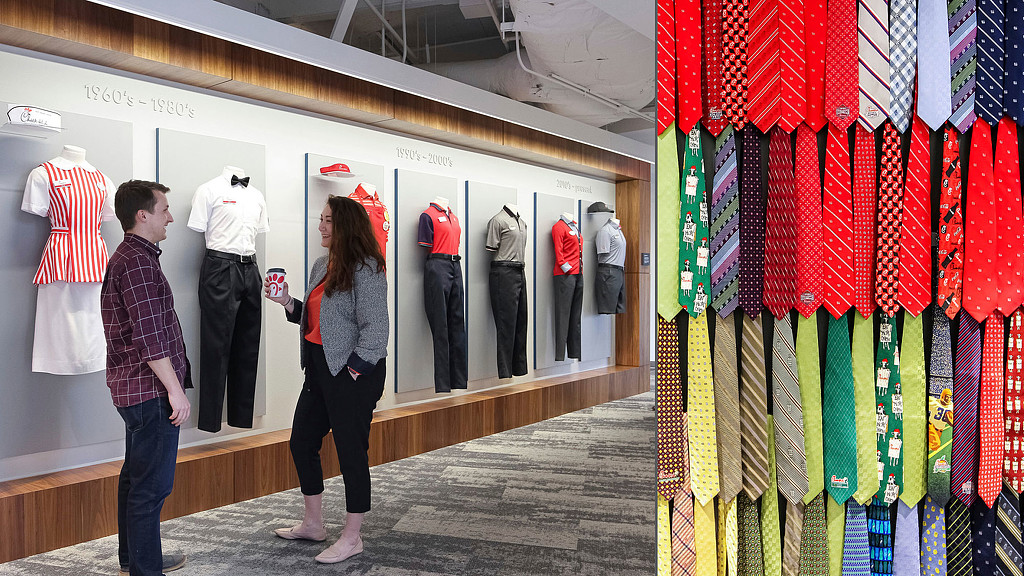Why Physical Brand Experiences Are More Effective
October 28, 2021 | By Scott Hickman, Laura Gralnick
While brands are primarily defined and developed for external channels — broadcast, out-of-home advertising, print, social media, etc. — the application to work environments and an internal audience can offer new insights and lead to greater relevance. A successful branded environment inspires and empowers people by connecting with them at an emotional level. Ranging from a three-dimensional logo at the reception to a digital installation that shares an interactive story, physical brand experiences make the workplace a powerful driver for organizational success — from employee engagement, to talent retention, to revenue generation and innovation capability.
Understanding how we experience brand
We define effective physical brand experiences through three pillars, and when combined, they can help an organization realign their brand with purpose, engage employees, and instill a strong sense of pride.
- Literal: Literal brand elements consist of logos, typography, color palette, and other visual assets that communicate a company’s look and feel. From defining the arrival experience to serving as visual cues when navigating from one floor to another, literal elements promote immediate recognition and add authenticity to space. For the new Hudson River Trading headquarters, environmental graphics and bespoke features, like a bronze installation of the company logo as a circuit board embedded into the concrete floor, not only act as a cue to let visitors know they’ve arrived at HRT but also express the company’s scientific approach to algorithmic trading.
- Liquid: Demonstrated as products and services, the “liquid” brand elements are used to surprise and delight, such as creating areas that allow for staging/merchandising to serve as a showcase or integrating products into space to add a tactile layer of storytelling. At Warner Music Group’s headquarters, the space leverages three-dimensional installations, printed photos, and digital elements that take inspiration from sources like artist portraits, New York City music venues, and street art to showcase the company’s pioneering role in the music industry.
- Living: “Living” a brand’s experience is often done through a celebration of people and culture, which amplifies a brand’s strength by providing opportunities for employees to “put their mark” on the space and engage with the brand authentically, as seen with Campari America’s headquarters. A variety of bars immerse employees and clients in the brand’s Italian legacy while allowing them to engage with its diverse portfolio of products. By participating in this distinct experience, guests see themselves in the Campari brand.
While logos and visual assets are timeless artifacts that provide the foundation of placemaking within the workplace, their usefulness is limited. The true potential of a brand is fluid and alive, so strategically leveraging all three forms can create inventive and unexpected experiences.
The ability to stretch and learn
Unlike many brand applications, the workplace can accommodate an ecosystem of brand channels, creating a safe place to test and experiment with a captive audience. From passive and calming to dynamic and energizing, the workplace frees up a spectrum of moments for a brand to come alive through:
- Wow! moments: Impactful experiences to remember, such as a custom installation.
- “Insta” moments: Activated interactions with the brand that serve as great social media content.
- Ambient moments: Augmenting the energy of the space through artwork or custom graphics to enhance the interior.
- Core moments: Supporting the work environment through signage and wayfinding to direct people within space.
To effectively communicate the impact of brand promise in the workplace, we must allow a brand to be flexible in how it is activated and choreographed throughout the visitor journey. As brand values constantly evolve, this omnichannel approach encourages employees — the true brand champions — to play an integral role in that evolution to help determine what resonates. This feedback loop with employees reinforces a culture of equity, appreciation, and collective identity.
As we reimagine the workplace for today’s needs, shifting from a brand as a one-direction narrative to a more collaborative conversation will help establish stronger community. A Literal, Liquid, and Living approach to a branded workplace enables this transition. By manifesting a brand’s vision and values within the workplace, employees understand the company’s soul, connect with its purpose, and become its champions. In addition to the direct impact this has on spurring ideas and enabling change, it ultimately strengthens company culture by inspiring and empowering people, which is what the future workplace will be defined by.

